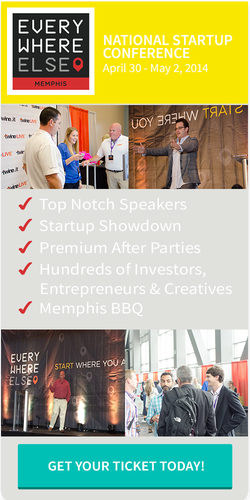 You love your website like your baby. It represents your startup perfectly — except when it doesn’t.
You love your website like your baby. It represents your startup perfectly — except when it doesn’t.
Your website might not be delivering the message you thought it was. Here are five of the most common startup website mistakes that I see founders make when creating their own website or hiring a designer to create it for them — and what to do about each:
1. Designing for the “Cool” Factor
You want your startup to stand out from all the others out there, so you design your logo and your site with lots of flair. Figuring that a flashy design will stick in people’s minds, you forgo clarity.
While people may think your site looks good, they won’t remember what your service or product is all about. They might not even grasp your concept while they’re on your site, which will cause them to hit the back button or move on without a second thought.
Ouch. Visitors can be fickle, so make sure to focus on explaining what your startup does and how it will help make your customers’ lives better.
2. On-Page Overwhelm
In an effort to tell people all the reasons they need to sign up for your service or product, you might go overboard and cause more harm than good.
If you have more than three major pieces of information or options on a page, you’re likely overdoing it. When it comes to designing effective websites, keeping the visual options to a minimum always results in better conversions.
Instead of packing your website with the 20 different reasons to try your product, focus on the big three benefits that you can deliver. Think of what your startup helps people get more or less of, whether that’s sleep or anxiety.
3. Not Testing On All Devices
Your website looks great on your computer and maybe your phone. But have you tested it on a variety of different devices? Have you considered making it design responsive, so that it will resize based on the dimensions of the screen?
These are all great questions to consider before you hit publish on your new startup website, but it’s worth going back and checking different browsers and devices even if your site is live.
4. Forgetting to Ask for Contact Details
Most visitors who land on your website will not buy your product or service. It’s just not going to happen — but it doesn’t mean that you should let these curious folks walk away into their busy lives, never to return.
Instead, make sure you have a simple and prominent way for them to stay in the loop with your startup’s progress. Make the offer to join your email list an inviting one by focusing on what benefits they will get from hearing about your startup.
If you can’t think of anything, consider creating free content in the form of articles or videos that you think will be of interest to your ideal customers. No one can turn down a highly targeted freebie that’s designed to solve their exact problems.
5. Not Offering a Taste Before Asking for the Sale
Speaking of freebies, do you have anything on your website that people can try before they buy? Depending on your product or service, you might be able to offer a taste before asking them to commit by plunking down their credit card details.
If you offer an ongoing service, it’s a great idea to let people get used to your software or services. They’ll be hooked and won’t want to stop using it. Try offering a free trial, and be generous — if you did your job right in creating your offering, people will take you up on your paid version, too.
Think outside the box on this one, because offering a sample is one of the best ways to get people open to buying from you.
Do You Make Any of These Mistakes?
Now that you know what to watch out for when creating or updating your startup website, it’s time to be honest with yourself and assess your own site. And if you need an unbiased opinion, ask a friend or colleague — someone who isn’t as close to your “baby” as you are.
Nathalie Lussier got her Bachelors in Software Engineering then promptly turned down a “stable” job on Wall Street to start her own online business. She’s a sought after digital strategist who teaches people how to get techy with their business. Get your Free Website Checkup at http://GetTechyNow.com.
The Young Entrepreneur Council (YEC) is an invite-only organization comprised of the world’s most promising young entrepreneurs. In partnership with Citi, the YEC recently launched #StartupLab, a free virtual mentorship program that helps millions of entrepreneurs start and grow businesses via live video chats, an expert content library and email lessons.




















